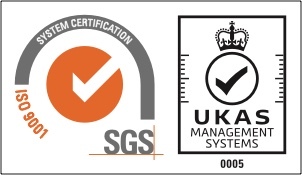.jpg)
Many people look to the history books to learn lessons from successful leaders. Every journey is different, and it makes perfect sense to draw one or a few connecting lines between successful leaders, whether that’s their self-awareness, vision, confidence or problem-solving ability.
That said, context is key to leadership – it always has been. What worked in one era or situation might not fit another. You could argue that leadership is more important today than ever before. We look to leaders to inspire, motivate team members, adapt to change, foster collaborative environments, set a vision for the future and nurture positive work environments where every individual can thrive.
According to TeamStage, 39% of employees report a lack of collaboration, while teamwork is seen as ‘very important’ for 37% of employees. Of course, teams and individuals will be at different developmental levels across various aspects of their roles. Combine this with the fact that many businesses have shifted to hybrid work, bridging the gap between physical and virtual spaces, and you get a sense of the challenges facing leaders today.
What can we learn from Situational Leadership® to foster a cohesive and productive team culture, and how can we overcome teamwork challenges by championing versatility and responsiveness over rigidity and uniformity?
Addressing Generational Differences and Global Team Dynamics
At its core, Situational Leadership® promotes leadership agility, empowering leaders to tailor their approach to the needs of their team or individual members. This flexibility can prove to be crucial for bridging generational divides whilst ensuring effective collaboration across global or hybrid teams. When leaders (and managers) show a genuine interest in understanding the nuances that every individual brings to the table, they become more mindful of their own viewpoints and the diverse needs, time zones and lifestyles of their team members.
When Satya Nadella, Executive Chairman and CEO of Microsoft, was asked about the company’s transition to hybrid work, he was quick to emphasise just how important it is to listen to employees and respond with agility.
“Nearly every day, my team sits down with organisation leaders and partners from across the world who are doing the hard work to ready their people for the coming future of work. Naturally, in these meetings, we are often asked: What is Microsoft doing? And the first thing I tell them is: Just like you, we’re learning as we go – studying data, listening to our employees, and responding with agility to what works and what doesn’t. Because a growth mindset is the key to charting a path forward in any moment of uncertainty.”
As businesses increasingly operate on a global scale, teams are becoming more geographically dispersed. Yet, Situational Leadership® can help decision-makers effectively manage these complexities by promoting an adaptable and culturally sensitive leadership style. Understanding and respecting cultural differences can ultimately enhance team cohesion and productivity.
The Role of Reverse Mentoring
It’s more than just a buzzword – reverse mentoring can play a crucial role in shaping an inclusive culture, while creating unique learning opportunities. This approach aligns with Situational Leadership® because it shows that learning can flow in all directions, opening doors to continuous improvement and adaptability. Leaders and teams who are excited to explore new perspectives and challenge the status quo are often better positioned to innovate and thrive. Therefore, reverse mentoring can help ensure teams are fully prepared to harness the collective wisdom of their diverse workforce.
The adoption of Virtual Instructor-led Training (VILT), by its very nature, supports a dynamic learning environment where insights and experiences can be shared freely, transcending geographical barriers and hierarchical boundaries. When team members, regardless of age or rank, become teachers and learners, they contribute to a dynamic and comprehensive learning experience.
No matter our roles or responsibilities, we all have obstacles we must overcome. For leaders, these challenges often revolve around shaping a cohesive, adaptive and inclusive environment. Situational Leadership® is a framework that not only helps leaders and managers recognise those challenges, but respond with agility to meet the diverse needs and dynamics of their teams.
Are you looking to take proactive steps to enhance your team’s performance and cohesion?
The Situational Leadership® model is arguably the most recognised, utilised and effective leadership tool in the history of the behavioural sciences. Whether delivered as Virtual Instructor-led Training (VILT), face-to-face, or a blend of both, our Building Leaders course not only covers the theoretical underpinnings of Situational Leadership® but also practical assessments (LEAD Self and LEAD Other) to hone your ability to choose the right leadership style for the situation at hand. At GBS Corporate Training, we can equip you with the tools necessary to navigate today’s diverse and evolving workplace.
Our public VILT is ideal for individuals to join and is being delivered as two, four-hour sessions on 29th to 30th April 2024 and 12th to 13th June 2024. For further information and costs please send us a message or call us on 01252 618 400 . Enquire today to enhance your leadership capabilities and rise to the challenges of modern leadership.
Situational Leadership® and Performance Readiness® are registered trademarks of Leadership Studies, Inc. dba The Center for Leadership Studies. Copyright ©2015, Leadership Studies, Inc. All Rights Reserved.






